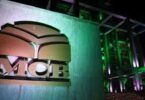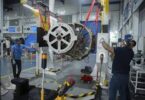WASHINGTON (Reuters): U.S. job growth increased less than expected in April and the unemployment rate dropped to near a 17-1/2-year low of 3.9 percent as some out-of-work Americans left the labor force.
The Labor Department’s closely watched employment report on Friday also showed wages barely rose last month, which may ease concerns that inflation pressures are rapidly building up, likely keeping the Federal Reserve on a gradual path of monetary policy tightening.
“Fed officials can rest easy that there is not any wage-based inflation on the horizon,” said Chris Rupkey, chief economist at MUFG in New York. “There is no need to speed up the path of interest rates because inflation isn’t heating up in a worrisome manner.”
Nonfarm payrolls increased by 164,000 jobs last month, the Labor Department reported.
Data for March was revised to show the economy adding 135,000 jobs instead of the previously reported 103,000. That was the fewest amount of jobs created in six months and followed an outsized gain of 324,000 in February.
While cold weather in March and April probably held back job growth, hiring is moderating as the labor market hits full employment. Employers, especially in the construction and manufacturing sectors, are increasingly reporting difficulties finding qualified workers.
The drop of two-tenths of a percentage point in the unemployment rate from 4.1 percent in March pushed it to a level last seen in December 2000 and within striking distance of the Fed’s forecast of 3.8 percent by the end of this year. It was the first time in six months that the jobless rate dropped.
But 236,000 people left the labor force in April, adding to the 158,000 who quit in March.
The labor force participation rate, or the proportion of working-age Americans who have a job or are looking for one, fell to 62.8 percent last month from 62.9 percent in March. It was the second straight monthly drop in the participation rate.
Economists polled by Reuters had forecast payrolls rising by 192,000 jobs in April and the unemployment rate falling to 4.0 percent. Average hourly earnings rose 0.1 percent last month after a 0.2 percent gain in March. That left the annual increase in average hourly earnings at 2.6 percent.
The dollar shrugged off the employment data, rising to its highest level this year against a basket of currencies. Stocks on Wall Street rallied, with all three indexes closing more than 1.0 percent higher. U.S. Treasury yields were little changed after dropping to multi-week lows.
‘SUSTAINABLE PACE’
Sluggish wage growth and a slowdown in hiring threaten to undercut the Trump administration’s argument that its $1.5 trillion income tax cut package, which came into effect in January and is highlighted by a sharp drop in the corporate income tax rate, would boost wages and hiring.
Companies like Apple have used their tax windfall for share buybacks and dividends.
President Donald Trump cheered the drop in the unemployment rate on Friday.
“I thought the jobs report was very good. The big thing to me was cracking 4,” Trump told reporters. “That hasn’t been done in a long time … we’re at full employment. We’re doing great.”
Democrats, however, reiterated their criticism of the tax cuts, saying more than $390 billion in share buybacks had been announced since the passage of the tax bill.
“President Trump promised American families that they would see a $4,000 annual raise after the tax plan, so far, average weekly wages have increased $11.69,” Democratic Senator Martin Heinrich said.
But average hourly earnings could be understating wage inflation. The Employment Cost Index, widely viewed by policymakers and economists as one of the better measures of labor market slack, showed wages rising at their fastest pace in 11 years during the first quarter.
Inflation is flirting with the Fed’s 2 percent target.
The Fed’s preferred inflation measure, the personal consumption expenditures price index excluding food and energy, was up 1.9 percent year-on-year in March after a 1.6 percent rise in February.






